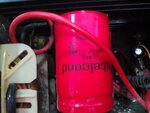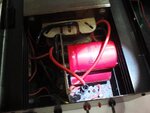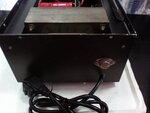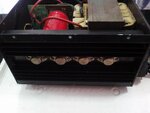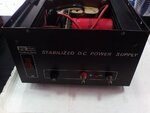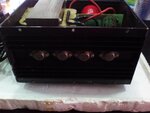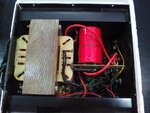neazoi
Advanced Member level 6
Hi I saw a linear (not switching) PSU of 40A 13.8v.
It has eight 2n3055 plus another one, possibly for driving.
Inside there is no chip but a small circuit composed of transistors, a small plastic one and one like the package of BD139.
However, inside, there is a coil-shaped resistor (I believe it is a resistor) with air-core (solenoid).
When the PSU draws 20A this resistor gets very hot and hot air comes out of it. It is like the air out of a high wattage soldering iron, when it is heated the hot air quickly goes up.
What is this resistor used for and why it gets so hot in high load?
Next question is, can I replace it with a "brick" type one and fix it to the heatsink? But how should I measure it's value hot or cold?
It has eight 2n3055 plus another one, possibly for driving.
Inside there is no chip but a small circuit composed of transistors, a small plastic one and one like the package of BD139.
However, inside, there is a coil-shaped resistor (I believe it is a resistor) with air-core (solenoid).
When the PSU draws 20A this resistor gets very hot and hot air comes out of it. It is like the air out of a high wattage soldering iron, when it is heated the hot air quickly goes up.
What is this resistor used for and why it gets so hot in high load?
Next question is, can I replace it with a "brick" type one and fix it to the heatsink? But how should I measure it's value hot or cold?
